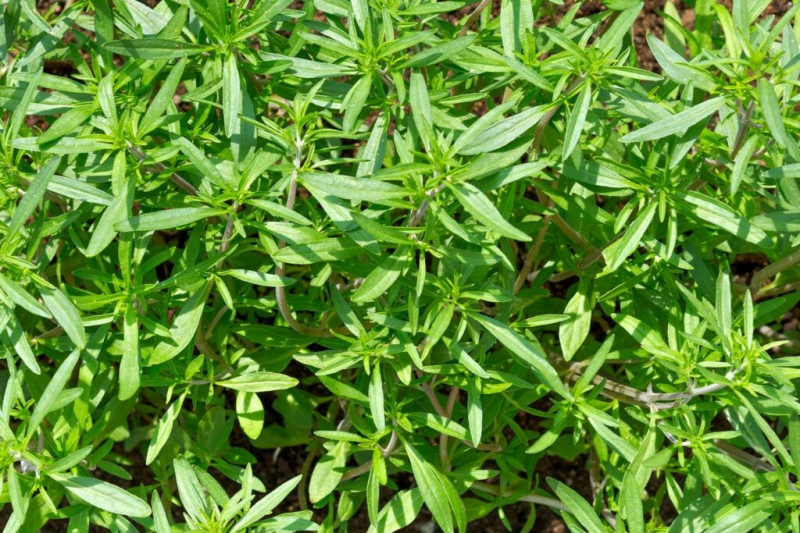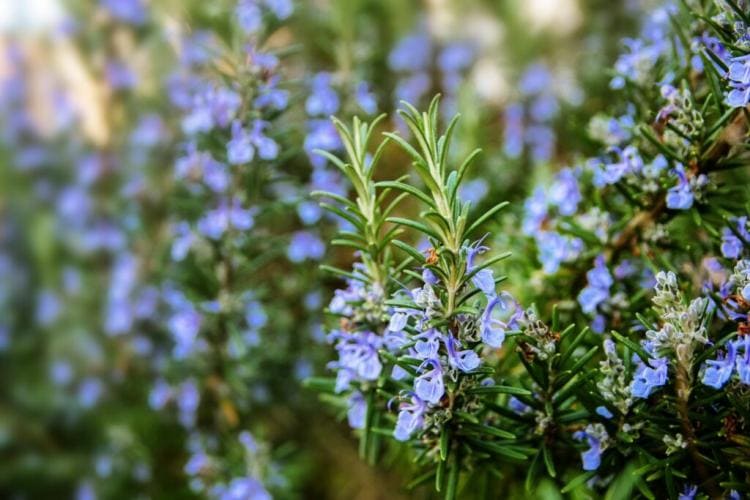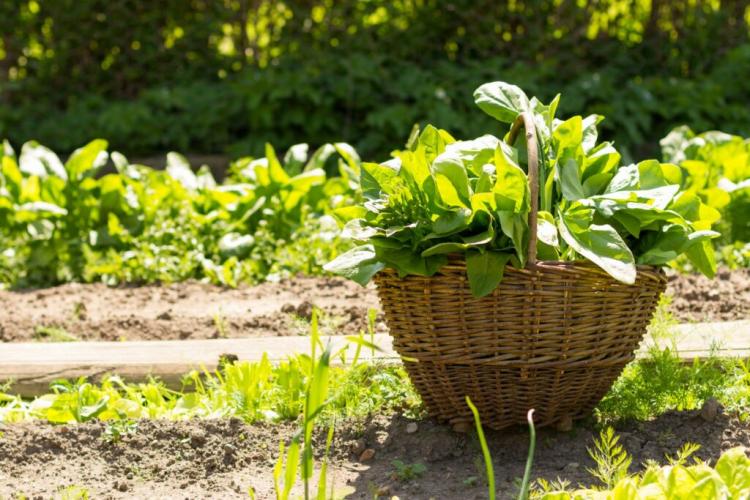Summer Savory Herbs: From Planting To Harvesting And Drying
Where and when do you sow summer savory herbs? How do you go about harvesting? And can you freeze or dry savory? We reveal everything to do with planting savory in your own garden. Savory ( Satureja ) must not be missing in any herb bed. The aromatic herb has always been valued for its delicious taste and also for its healing properties. It is undemanding and thrives without much effort in the pot, on the balcony, or in the garden. Where it originally comes from, how best to grow, care for, propagate and harvest it; and how it is used in the kitchen, we have summarized for you in this article.
Summer Savory belongs to the mint family (Lamiaceae) and is related to other Mediterranean herbs such as thyme ( Thymus vulgaris ), oregano ( Origanum vulgare ), or rosemary ( Rosmarinus officinalis ). Savory is native to the Mediterranean and the Black Sea. Even the Romans used savory in the kitchen and also as a medicinal herb. Today it is widespread across Europe and is still found wild in southern Europe. It is also grown in South Africa, India, and North America. Blossoming savory herbs are also highly valued by bees of various kinds, which is why the delicious aromatic herb is twice as useful in combination with a bee pasture.
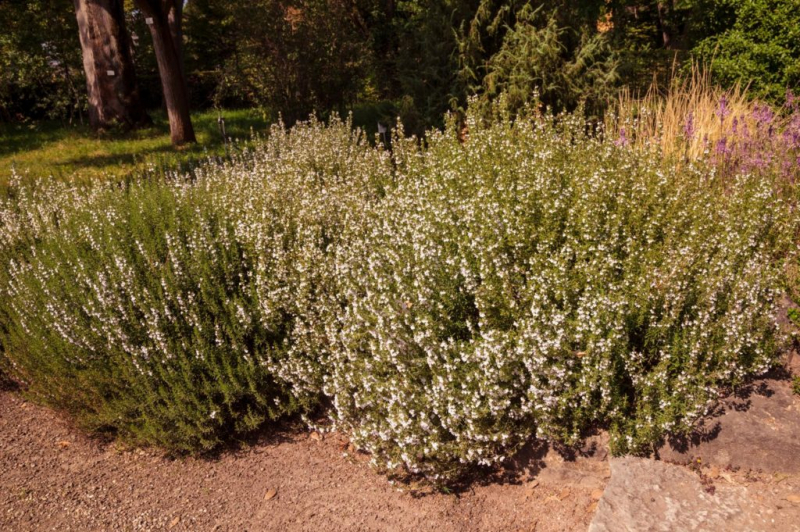
While summer savory ( Satureja hortensis ) grows as an annual herbaceous plant, mountain savory ( Satureja montana ) is an evergreen subshrub. Summer savory grows up to 25 centimeters high, mountain savory even up to 70 centimeters. Both form a strong main root. The upright stems lignify quickly, and in summer savory they also shimmer purple. The leaves of both species are narrow, linear-lanceolate, and dark green. Depending on the variety, savory flowers in white, pink or purple. Summer savory flowers from July to October, mountain savory from June to September.
Savory species and varieties
Table of Contents
There are over 35 species in the savory genus. Three species are particularly interesting for cultivation, which we will introduce to you below.
Summer savory
The summer savory is probably the most widely grown and best known of the savory herbs. It is also known under the names “savory” or “real savory”. The taste of this species is aromatic and spicy, but not too severe. Summer savory is annual and must therefore be re-sown every year. We would like to introduce you to some interesting varieties for growing in your own garden or pots:
- ‘Aromata’: Very vigorous and aromatic.
- ‘Compact’: This is characterized by compact growth and a great aroma.
- ‘Cyrano’: Up to 50 cm high, particularly large and wide leaves.
- ‘Safira’: aromatic and vigorous.
- ‘Pikanta’: Peppery taste, compact and bushy.
- ‘Saturn’: Has a particularly large number of large leaves that are rich in essential oil.
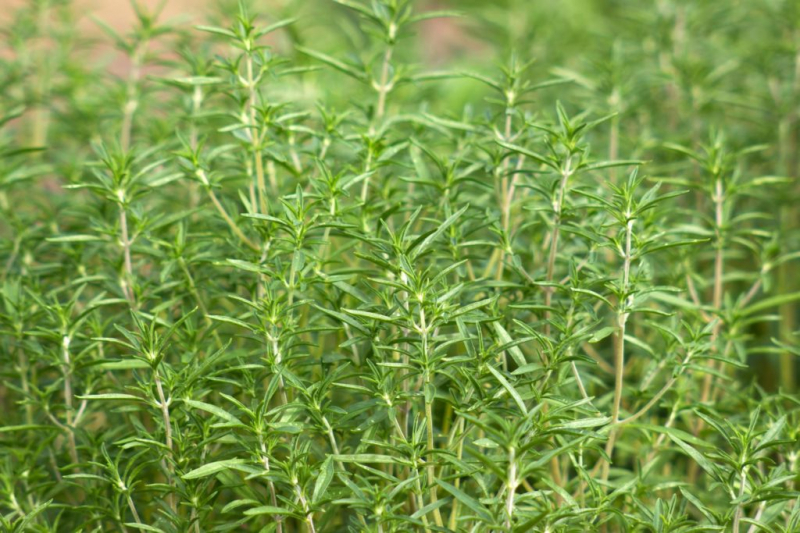
Mountain savory (winter savory)
The second known type of savory is the mountain savory. Because of its hardiness, it is also called winter savory. It is frost-tolerant, can be cultivated for several years, and is characterized by its particularly intense taste, which is often too strong for a few. This is why mountain savory is rarely grown commercially. It is only used to extract the essential oil, but not as a spice. For hobby gardeners, however, winter savory can be a real alternative or addition to annual savory, as it is even easier to care for and can survive in the garden for many years. It is also a beautiful ornamental plant in rock gardens and is used as a natural remedy to control seed beetles, powdery mildew, and aphids in the garden.
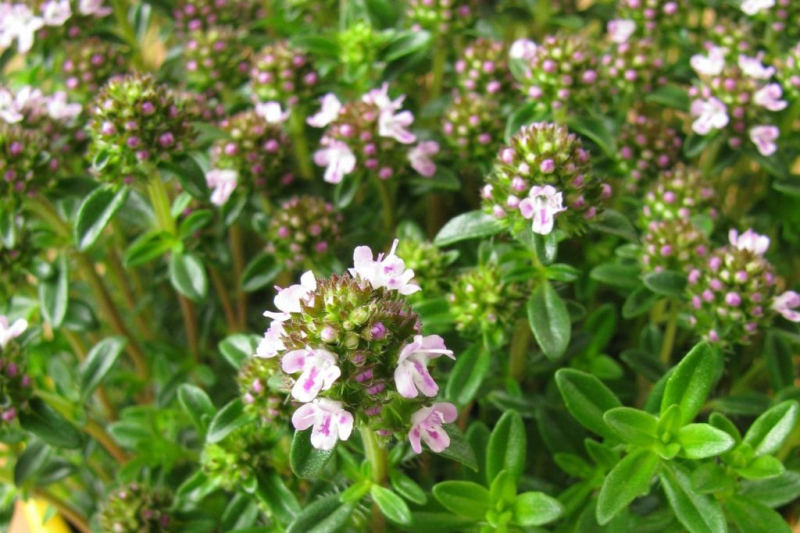
Creeping summer savory
The third type of savory that might be of interest to hobby gardeners is the creeping savory ( Satureja spicigera ). This species is particularly suitable for those who want to use savory as a ground cover. For example, in the rock garden or for greening walls, Creeping Savory is particularly good. Of course, it is also suitable for seasoning.
You might so like: Hosta Plants (Cortaderia selloana): When, How & What To Fertilize?
Planting summer savory
Savory should only be sown or planted when frost is no longer likely. If you want to start sowing savory earlier, you can do it on the windowsill or under glass from the beginning of April.
It is best not to sow the savory directly in the garden bed until mid-May when the ice saints are over. It is also not time until mid-May to plant out early or purchased plants in the garden.
Summer Savory herbs – regardless of whether summer or mountain savory – prefers it to be sunny and warm. It is therefore important that the choice of location is made accordingly. The soil should be loose and well-drained. In addition, savory herbs love chalky soils, so occasionally ground eggshells or wood ash are good for them. Only the nutritional requirements are different for mountain savory and summer savory. While the annual savory likes it rich in nutrients and humus, mountain savory prefers lean and nutrient-poor soils.
When should you plant savory?
- Prefer: from the beginning of April
- Plant outdoors: mid-May
- Direct sowing outdoors: mid-May to August

Where is savory planted?
- Sunny and warm location
- Loose and well-drained soil
- Lime-loving
- Summer savory: nutrient-rich and humus-rich soil
- Mountain savory: lean and nutrient-poor soils
To sow or plant savory, follow our simple step-by-step guide on how to plant savory:
- To prefer: fill pots with soil – for example with organic herb soil
- Summer Savory sprouts light: Cover the seeds with a maximum of 1 cm of soil
- Germination time: 3 to 4 weeks
- For sowing and planting in the garden: prepare the bed
- Enrich the soil with a fertilizer with organic long-term effects such as the organic universal fertilizer
- Lean soil with sand/pumice/zeolite, depending on the type of savory
- Create planting grooves or sow loose
- Row spacing: 30 cm
- Plant spacing: 25 cm
- Water well
- If necessary, isolate after emergence
Propagate savory
While summer savory can be propagated generatively, i.e. by seeds, mountain savory must be propagated vegetatively. This is done using cuttings or by dividing. It is best to cut cuttings in July or August. To do this, select semi-lignified cuttings and plant them in the substrate of the cutting. You can do that with summer savory and with mountain savory.
You might so like: The 10 Most Beautiful Summer Flowers For The Garden
The best time to split is in spring. Large specimens of savory can be dug up and divided with a spade. Only mountain savory can be propagated by division.
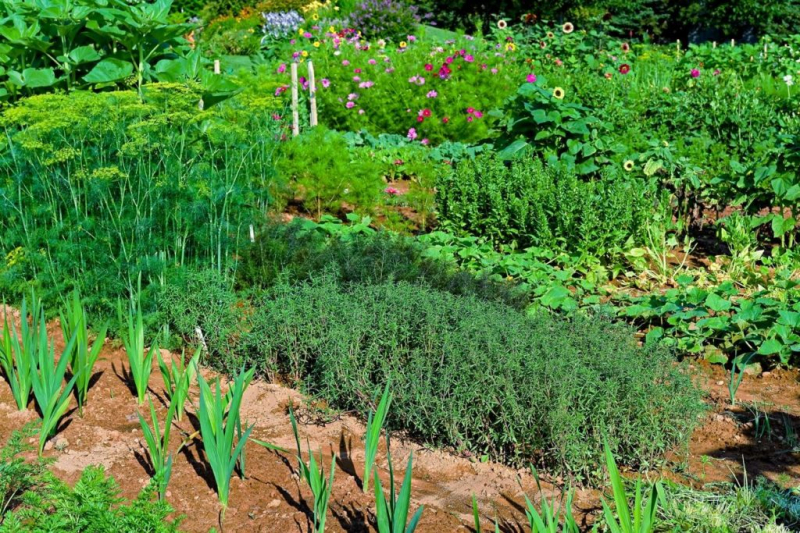
If you don’t want to buy new seeds for your summer savory every year, you can win them yourself. To do this, the plant must be able to bloom and then form seeds. Ants are responsible for pollinating summer savory. So these should not be chased out of the herb patch. Summer savory flowers from July to October – after which the seeds ripen and can be harvested. The collected seeds are cleaned and stored in a dark, cool, and dry place. The next year they will be ready to sow.
Maintain savory herb
Savory is extremely undemanding in every way and hardly does any work. Just regularly remove the weeds by weeding or create a layer of mulch. The rainwater should be enough to supply the savory with water; you only need to water potted plants regularly. Even in longer dry periods, the herb is naturally happy to have water.
Fertilize your savory once a year in the spring. A fertilizer with an organic long-term effect or compost is best suited for this. Organic universal fertilizer protects nature, has a lasting effect, and contains all the nutrients your savory needs. All types of savory are best cut back by about ten centimeters shortly before flowering, around July. This stimulates the plant to grow again so that you can harvest again.
How do you care for savory?
- Savory is frugal and easy to care for
- Remove weeds and loosen the soil
- Water only when it is hot and dry for a long time
- Fertilize once in spring with a fertilizer with organic long-term effects – for example, the organic universal fertilizer – or with compost
- Shorten by approx. 10 cm before flowering; this promotes stronger leaf growth
Hibernate summer savory
Is summer savory herb actually hardy? That depends on the type of savory. Winter savory is hardy. However, the herb comes from the Mediterranean region and can only survive the winter well up to winter hardiness zone 6 (-20 ° C) without protection. In colder areas, it should be protected from frost. In the bed, it can be covered with brushwood or straw. Mountain savory always needs protection in the pot in winter, because the soil in the planter can freeze through quickly. In winter, it is better to place your mountain savory in a cool, light, and frost-free shed or the stairwell. Summer savory unfortunately does not survive the winter and has to be sown or replanted every year.
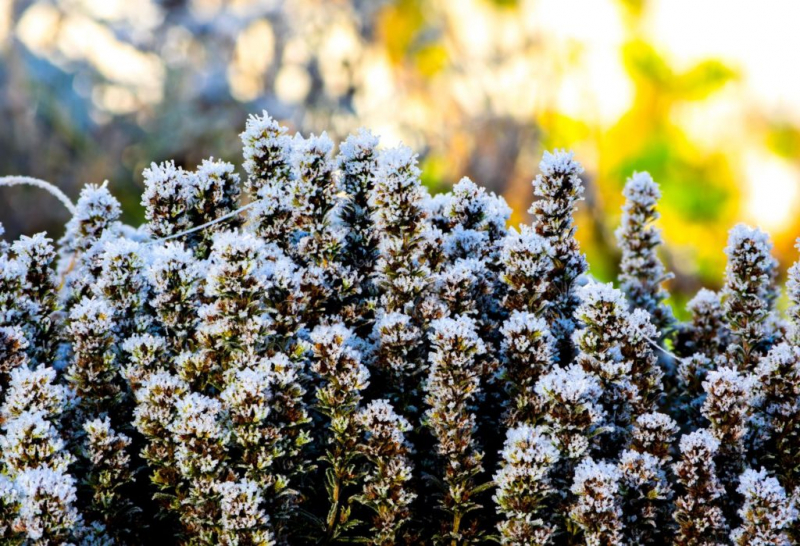
Harvest savory
When do you harvest savory? And how do you go about it? Savory can be harvested before and during flowering. Before flowering, the essential oil content in the leaves is highest. This means that the herb is then the most aromatic. The aroma diminishes somewhat during flowering. This can be of particular benefit to those for whom the mountain beans are actually too hot and too strong. As the name suggests, the summer savory harvest time is only in the summer until well into the autumn. Mountain savory can be harvested almost all year round. It only rests for a few months in winter.
Use scissors or a sharp knife to harvest savory. Now the stalks of the mountain savory are cut off halfway. With summer savory, you can cut the stems to just above the ground. Savory connoisseurs bundle the shoots together at harvest. This will make it easier to dry or freeze later.
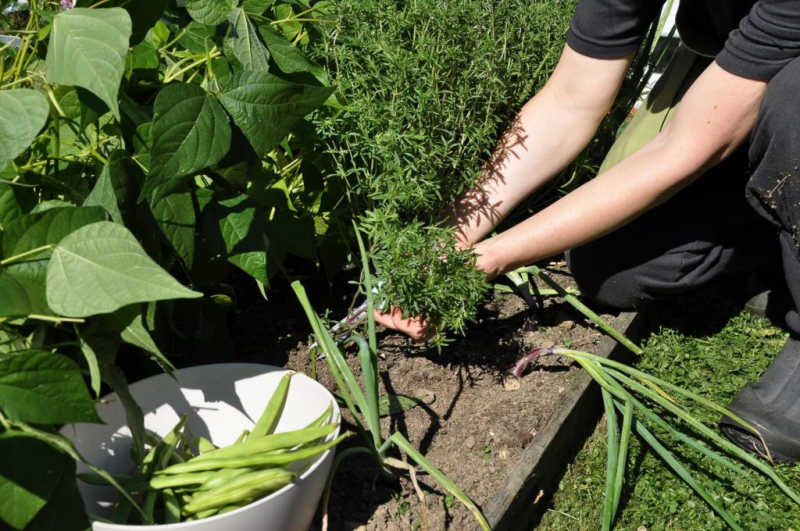
When and how is savory harvested?
- Harvest before and during flowering, as this is when the essential oil content is highest
- Summer savory: July to October
- Mountain savory: almost all year round
- Cut off fresh shoots just above the ground (summer savory) or halfway (mountain savory) with scissors or a sharp knife
Store and preserve the savory properly
How can I store and preserve savory? And should I dry or freeze savory for this? We will answer these questions for you in the next section.
Dry savory
Savory even gains flavor and aroma through drying. How to easily preserve your savory by drying can now be found in our step-by-step instructions.
Drying savory: step-by-step instructions
- Bundle and tie the harvested savory stalks together.
- Hang the bundles’ upside down, as dark as possible at 20-25 ° C, until they can be easily crushed.
- Alternatively, spread out on baking paper and allow to air dry in a dark place at 20-25 ° C.
- Hang or leave until the leaves are completely dry.
- After drying, remove the leaves from the stems.
- Pour into a light and airtight container.
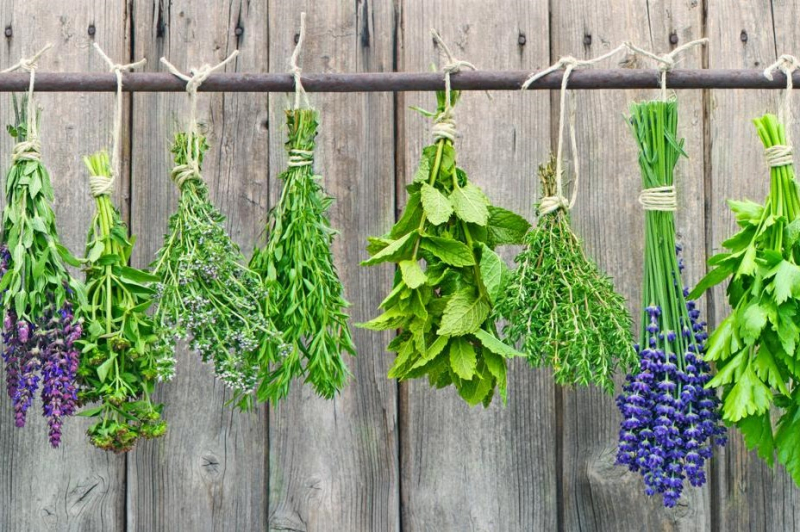
Freeze the savory
Can you freeze savory? Yes! In addition to drying, freezing is another way to preserve savory. You can freeze fresh savory as well as dried ones. Either pluck the leaves from the stems and freeze them or entire bundles. They can then be used as a whole later for cooking. Savory can also be frozen very well with vegetables.
Use and medicinal effects of savory
We will now answer all of your questions about the use and healing properties of savory below.
How does summer savory taste?
Savory tastes are aromatic and spicy. Mint and pepper notes dominate. It can taste slightly spicy and the taste is reminiscent of thyme for many.
Can you eat savory herb raw?
Savory can be eaten fresh without any problems. However, unlike many other herbs, savory is much more aromatic when dried than raw.
How do I use savory?
The aromatic summer savory herb can be used in many ways in the kitchen. First and foremost, savory is used as a spice and of course goes well with bean dishes of all kinds. But not only beans taste good with savory. Try it for seasoning antipasti, in dressings, sauces, with jacket potatoes, in herbal quark or cream cheese, or with egg dishes. Of course, savory is also a classic in the soup.

Does savory have any healing properties?
Savory was already used as a medicinal herb in the Middle Ages. Above all, digestive problems were treated with it. Beans and other legumes are not easy to digest. To prevent unpleasant gas formation in the stomach, the positive effects of savory were discovered early on; it has always been eaten with legumes. Savory tea can be used as a home remedy for coughs, diarrhea, and cramps. In addition, savory has antibacterial properties.
